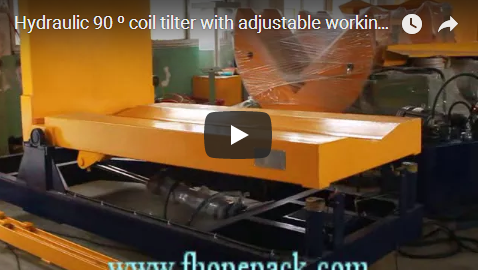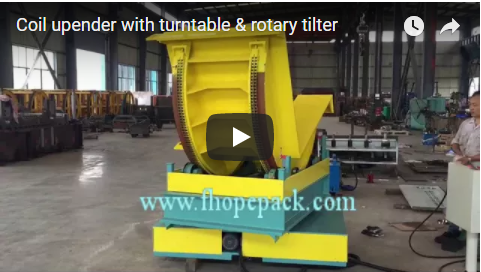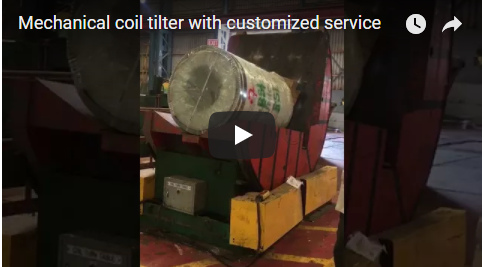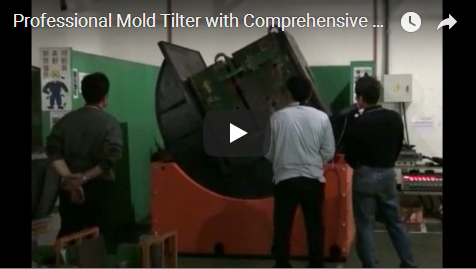httpv://youtu.be/VIDEO_ID_1
(Replace VIDEO_ID_1 with the actual YouTube video ID from your original post)
Optimizing Steel Coil Logistics: The Role of the C-Hook Lifting Device
In the demanding environment of steel processing, warehousing, and logistics, the efficient and safe handling of heavy steel coils is paramount. The C-hook, a specialized below-the-hook lifting device, stands out as an indispensable tool engineered specifically for this purpose. Its robust design and simple operating principle contribute significantly to operational throughput and workplace safety, aligning with modern material handling best practices.
[siteorigin_widget class="WP_Widget_Media_Image"][/siteorigin_widget]
Engineering Principles and Design Considerations

The effectiveness of the C-hook lies in its precisely engineered counterbalance design. Constructed typically from high-strength, low-alloy (HSLA) steel conforming to rigorous standards (e.g., ASTM specifications), the hook's C-shape allows the lower lifting arm, or prong, to securely engage the inner diameter (ID) of the coil. The upper arm acts as a counterweight, ensuring the hook remains stable and balanced during lifting, both when loaded and unloaded. This inherent stability is crucial for preventing load swing and ensuring operator safety.
Modern C-hook design often incorporates insights from Finite Element Analysis (FEA) to optimize stress distribution and ensure maximum load-bearing capacity within safe operating limits, as defined by standards like ASME B30.20 ("Below-the-Hook Lifting Devices"). Innovations, sometimes reflected in patents (e.g., focusing on improved counterbalancing, enhanced grip mechanisms, or integrated safety latches), continue to refine C-hook design for specific applications and challenging environments.
Operational Efficiency and Integration
C-hooks significantly enhance workflow efficiency in various industrial settings:
- Streamlined Loading/Unloading: Facilitates rapid engagement and disengagement with coils during truck, railcar, or vessel loading and unloading operations.
- Warehouse Management: Enables efficient movement of coils within storage facilities, optimizing space utilization and retrieval times.
- Process Integration: Designed to work seamlessly with overhead cranes and often used in conjunction with equipment like a coil upender (tilter), allowing for secure rotation of coils between horizontal (eye-to-the-sky) and vertical (eye-to-the-wall) orientations. This integration is vital for preparing coils for specific production lines or packaging processes.
The ability to handle coils that are often strapped, wrapped in protective paper or plastic, and potentially coated with oil or rust inhibitors requires a lifting solution that minimizes damage to the product while ensuring a secure grip. The smooth, broad surface of the C-hook's lifting arm is designed for this purpose, reducing the risk of crimping or marring the coil edges compared to other lifting methods.
[siteorigin_widget class="WP_Widget_Media_Image"][/siteorigin_widget]
Key Technical Specifications and Selection Criteria
Selecting the appropriate C-hook requires careful consideration of the specific application parameters. Key specifications include:
- Rated Capacity (Working Load Limit - WLL): Must exceed the maximum weight of the coils to be lifted. Common capacities range significantly, with heavy-duty models capable of lifting loads up to 30 tons (approx. 66,000 lbs) or more.
- Coil Inner Diameter (ID) Range: The hook's lifting arm must comfortably fit within the coil's ID range. Typical ID compatibility might be 20” to 24” (508mm to 610mm).
- Coil Outer Diameter (OD) Range: Determines the required throat opening of the C-hook. A wide OD range, e.g., 30” to 80” (762mm to 2032mm), offers versatility.
- Coil Width Range: The length of the lifting arm must accommodate the narrowest and widest coils. A common range is 16” to 72” (406mm to 1829mm).
- Handling Orientation: C-hooks are typically designed for handling coils with the eye (bore) in a horizontal position. Specialized designs exist for vertical eye handling if required.
- Coil Material & Condition: While primarily for steel, compatibility with other materials (like aluminum) should be confirmed. Surface conditions (oiled, strapped, paper/plastic wrapped) influence handling procedures and potentially hook surface requirements (e.g., protective padding).
- Operating Environment: Factors like temperature (hot coils require specialized hooks), indoor/outdoor use, and crane interface compatibility are critical.
Example Operational Parameters:
- Coil Material: Steel
- Max Coil Weight: 30 metric tons
- Coil ID: 508mm - 610mm (20" - 24")
- Coil OD: 762mm - 2032mm (30" - 80")
- Coil Width: 406mm - 1829mm (16" - 72")
- Handling Position: Horizontal Eye
- Coil Characteristics: Strapped, paper/plastic wrapped, oiled surface
- Movement: Transferring coils from cross-transfer systems, trucks, and within warehouse storage.
Safety and Maintenance: Adhering to Best Practices
Compliance with safety standards and diligent maintenance are non-negotiable for all lifting operations. For C-hooks, this includes:
- Regular Inspections: Frequent visual checks and periodic detailed inspections (as mandated by ASME B30.20 and local regulations) to identify wear, cracks, deformation, or weld issues.
- Operator Training: Ensuring personnel are fully trained on proper C-hook operation, load balancing, and recognizing potential hazards.
- Load Centering: Always ensuring the coil's center of gravity is properly aligned with the hook's lifting point to prevent tilting and instability.
- Avoiding Shock Loads: Smooth, controlled lifts are essential; abrupt starts/stops can impose dangerous dynamic forces.
- Proper Storage: Storing the C-hook appropriately when not in use prevents damage and tripping hazards.
[siteorigin_widget class="WP_Widget_Media_Image"][/siteorigin_widget]
In conclusion, the C-hook is a cornerstone technology for safe and efficient steel coil handling. By understanding its design principles, operational advantages, and adhering strictly to safety and maintenance protocols, industries can leverage this robust tool to optimize their material handling processes, reduce product damage, and enhance overall productivity. Selecting the right C-hook, matched precisely to the application's demands and compliant with relevant industry standards, is crucial for realizing these benefits.






